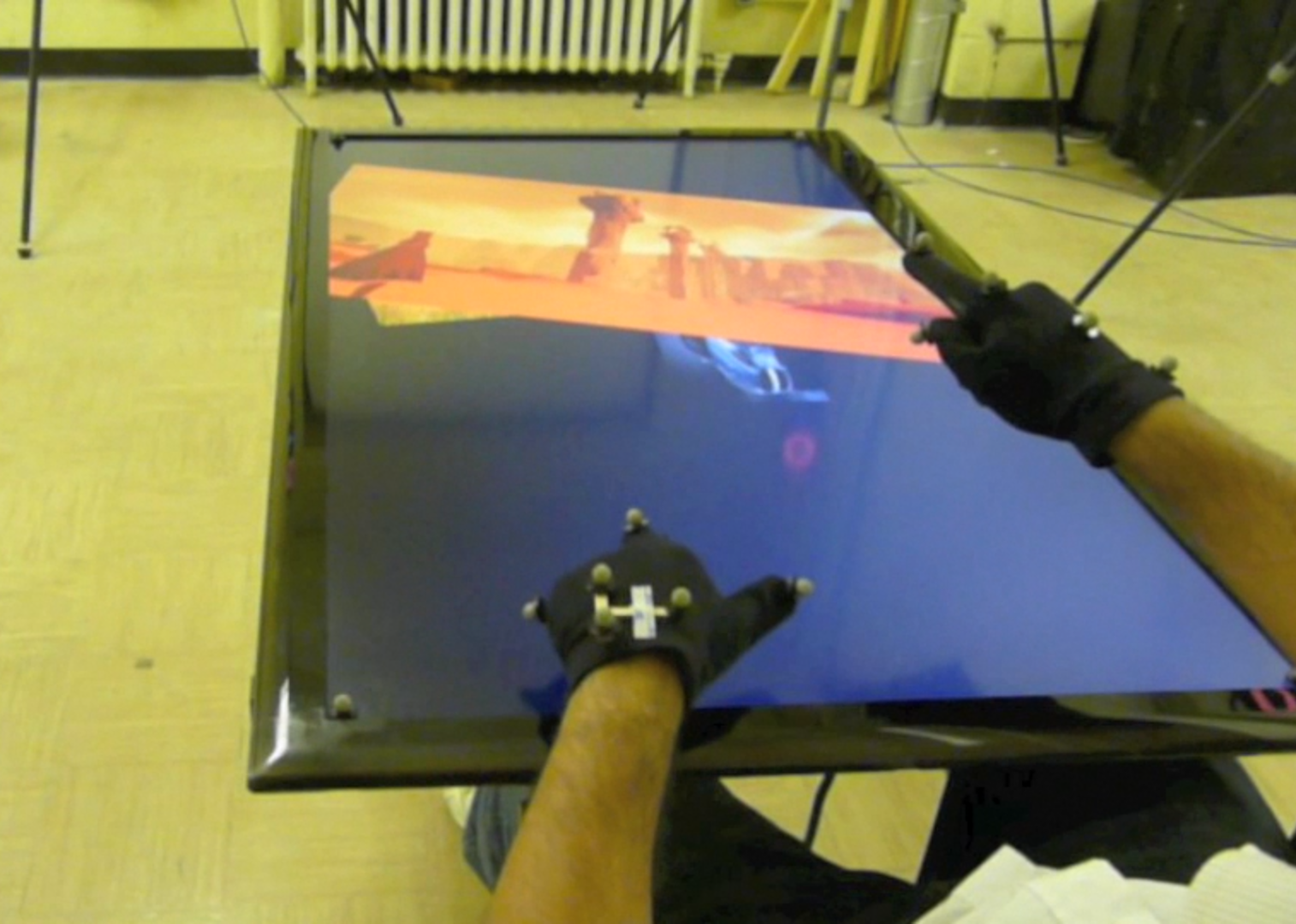Part-II of my Master's thesis (Remote Multitouch: In-Air Pointing Techniques for Large Display Interactions) where we were looking at how well in-air gestures can work for data manipulation tasks on a large horizontal/tabletop display. The ergonomics of a horizontal display, along with the position of a user (generally seated) changes the design constraints for any interaction techniques we wanted test.

In Part-I (MultiPoint) we looked at how freehand pointing compared to laser pointers for large vertical displays; in this case, it made more sense to compare perspective based pointing to multitouch input on a tabletop display. The task for a participant was similar to MultiPoint, and involved a docking task where participants moved + rotated a block from a start location to a destination (i.e. dock).

While we knew that multitouch input was good for interacting with objects/elements within reach, we were interested in looking at techniques that could augment multitouch input on tabletop displays. To that end, Pointable was designed to realize the following goals: to augment touch, minimize modality switches, support in-place manipulation, and be unobtrusive.
Here's a video of the system in action:
Software: C# with WPF
Hardware: Vicon Motion Capture cameras, designed and built custom markers used to track hand and head position
Excerpt from the paper published in ITS'11:
Pointable is an in-air, asymmetric bimanual manipulation technique, which augments touch input on a tabletop to more easily interact with distant content. The dominant hand points and acquires remote targets, while the non-dominant hand scales and rotates the target without the need to drag the target closer, i.e. Pointable allows users to perform in-place manipulation. However, if users prefer direct-touch for scaling and rotation transforms, they can use Pointable just as a tool to move content to and from a distant area of the tabletop. Switching from using Pointable to using direct-touch is simply a matter of placing a finger- tip of the dominant hand on the tabletop.
Related Publication(s)

